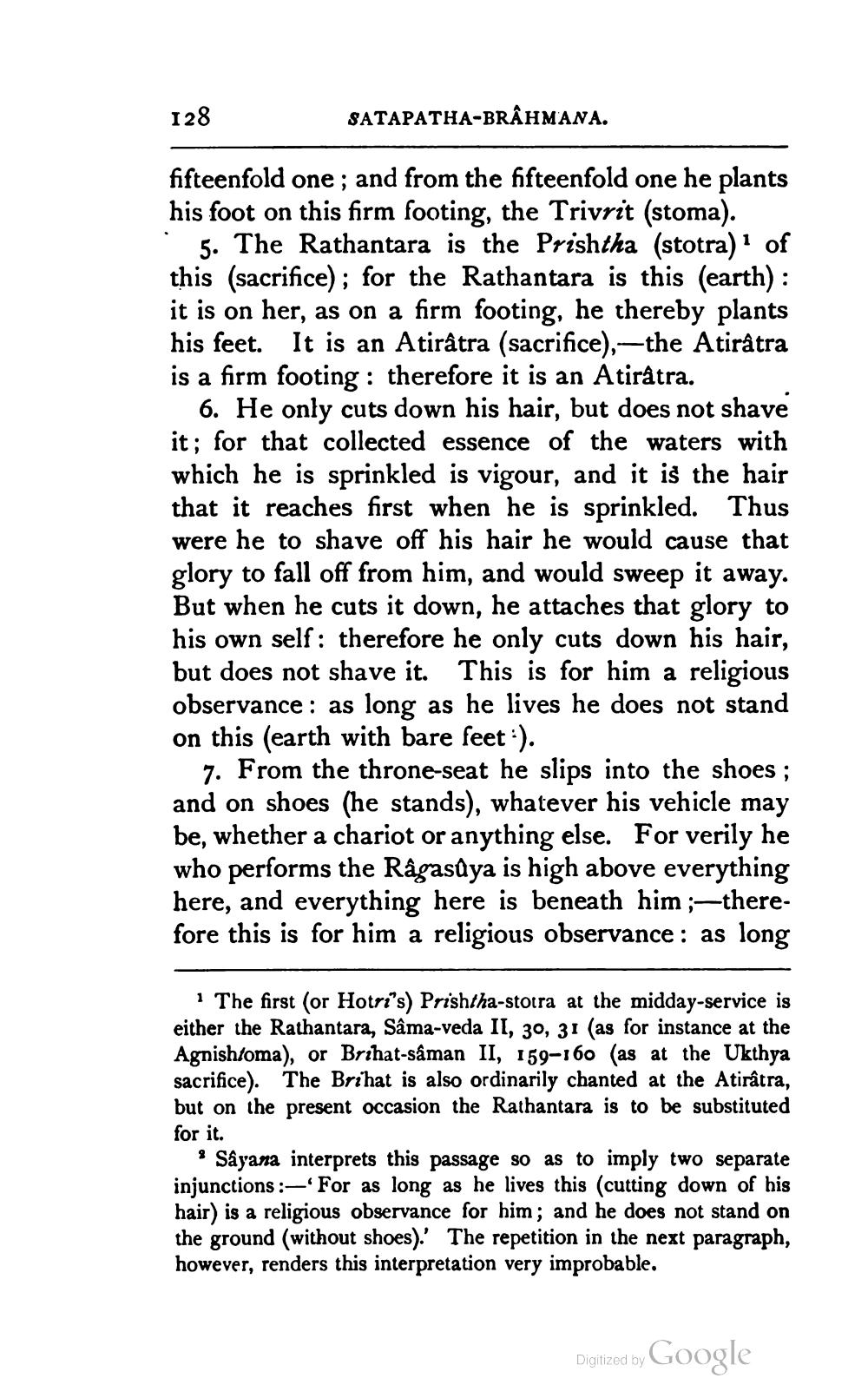________________
128
SATAPATHA-BRÂHMANA.
fifteenfold one; and from the fifteenfold one he plants his foot on this firm footing, the Trivrit (stoma).
5. The Rathantara is the Prishtha (stotra) of this (sacrifice); for the Rathantara is this (earth) : it is on her, as on a firm footing, he thereby plants his feet. It is an Atirâtra (sacrifice),—the Atiratra is a firm footing : therefore it is an Atirâtra.
6. He only cuts down his hair, but does not shave it; for that collected essence of the waters with which he is sprinkled is vigour, and it is the hair that it reaches first when he is sprinkled. Thus were he to shave off his hair he would cause that glory to fall off from him, and would sweep it away. But when he cuts it down, he attaches that glory to his own self: therefore he only cuts down his hair, but does not shave it. This is for him a religious observance : as long as he lives he does not stand on this (earth with bare feet :).
7. From the throne-seat he slips into the shoes ; and on shoes (he stands), whatever his vehicle may be, whether a chariot or anything else. For verily he who performs the Râgasdya is high above everything here, and everything here is beneath him ;-therefore this is for him a religious observance : as long
1 The first (or Hotri's) Prishtha-stotra at the midday-service is either the Rathantara, Sâma-veda II, 30, 31 (as for instance at the Agnishtoma), or Brihat-sâman II, 159-160 (as at the Ukthya sacrifice). The Brihat is also ordinarily chanted at the Atiratra, but on the present occasion the Rathantara is to be substituted for it.
* Sayana interprets this passage so as to imply two separate injunctions :— For as long as he lives this (cutting down of his hair) is a religious observance for him; and he does not stand on the ground (without shoes).' The repetition in the next paragraph, however, renders this interpretation very improbable.
Digitized by Google




